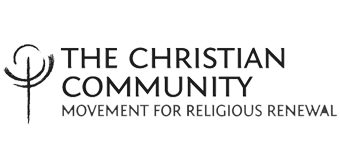The Revelation to John: Structure1
-
Introduction
1:1-8- 1:1-3 John’s Preface and the 1st Beatitude (reading and hearing this book
- 1:4-8 John greets the Seven Churches in Asia – Voice of the Lord God
-
Opening Vision
1:9-3:22- 1:9-20 I John (in the Spirit on the Lord’s Day) – Vision of One Like a Son of Man
- 2:1-3:22 The Seven Letters, to Ephesus – Smyrna – Pergamum – Thyatira – Sardis – Philadelphia – Laodicea
-
1st Throne Vision
4:1-7:8- 24:1-11 The One Sitting on the Throne and the 24 Elders
- 5:1-14 The Lamb
- 6:1-8 The first four Seals: the Four Horsemen
- 6:9-11 The fifth Seal: the souls of Martyrs
- 6:12-17 The sixth seal: signs of heaven, doom on earth
- 7:1-8 Heavenly Interlude on earth: sealing of the 144,000 Servants of the Lord
-
2nd Throne Vision
7:9-11:14- 7:9-12 Song of Those who Came Through; the Angels’ Song of Praise
- 7:131-17 Those in White Robes, explanation by one of the Elders
- 8:1 Opening the seventh Seal – Silence in heaven
- 8:2-5 The angel with the golden censer, the prayers of the saints
- 8:6-12 The first four Trumpets
- 8:13 Heavenly Interlude : the Eagle in Midheaven
- 9:1-12 The fifth Trumpet, being the first Woe
- 9:13-21 The sixth Trumpet, being the second Woe
- 10:1-11 Heavenly Interlude: the Strong Angel with the Book for the Seer (The seven Thunders)
- 11:1-14 The two Witnesses. Announcing the third Woe
-
3rd Throne Vision
11:15-13:18
[The seven visions of the Dragon]- 11:15-19 The seventh Trumpet: Hymn in heaven, the Elders giving thanks
- 12:1-6 First vision of the Dragon: The Cosmic Woman and the Birth of her Son
- 12:7-9 2nd Vision: Michael battling the Dragon
- 12:10-12 3rd Vision: Hymn of Victory in heaven
- 12:13-18 4th Vision: The Dragon battling on earth
- 13:1-10 5th Vision: The first Beast
- 13:1-14 6th Vision: The second Beast
- 13:15-18 7th Vision: The Mark of the Beast – the Number 666
-
4th Throne Vision
14:1-20
[The seven visions of the Son of Man]- 14:1-5 The Lamb on Mount Zion with the 144.000
- 14:6-7 The first Angel: the Eternal Gospel
- 14:8 The second Angel, announcing Judgment on Babylon
- 14:9-12 The third Angel, announcing Judgment on those who follow the Beast
- 14:13 2nd Beatitude (Those who die in the Lord)
- 14:14-16 The Son of Man reaping the earth with his sharp sickle
- 14:17-20 The Angel with the Sickle and the Angel with Power over Fire
-
5th Throne Vision
15:1-16:16
[The seven angels with their bowls]- 15:1-5 The Sea of Glass and the Song of Praise of those Who Conquered
- 15:6-8 The seven angels receive the seven golden Bowls
- 16:1-11 The first five Bowls of Wrath poured out
- 16:12-14 The sixth Bowl of Wrath poured out
- 16:15 3rd Beatitude (Warning to be awake and to keep one’s garments)
- 16:16 Assemblage at Armageddon
-
Interlude
16:17-18:24
[The seventh Bowl and the seven visions of doom]- 16:17-21 The seventh Bowl of Wrath poured out
- 17:1-6 The World Harlot of Power
- 17:7-18 The Angel interpreting her Appearance
- 18:1-3 Woe on Babylon
- 18:4-8 Another Angel warning the Believers
- 18:9-20 Lament of Kings, Merchants and Seafarers
- 18:21-24 The Angel with the Millstone, symbol of destruction
-
6th Throne Vision
19:1-20:15
[Seven Stages of Trial by Triumph and Judgement]- 19:1-10 “Hallelujah” after Babylon’s Fall – 4th Beatitude (Those called to the Marriage Supper of the Lamb
- 19:11-16 The White Horseman triumphant
- 19:17-21 Triumph over the Beast and its Vassals
- 20:1-3 The Dragon chained
- 20:4-6 The Thousand Years – 5th Beatitude (The First Resurrection)
- 20:7-10 Satan’s Last Struggle and his Defeat
- 20:11-15 The Last Judgment
-
Final Vision
21:1-22:7
[New Jerusalem]- 21:1-4 A New Heaven and New Earth
- 21:5-8 God’s Promise
- 21:9-17 The Heavenly City, Lay-out and Measurements
- 21:18-21 The City’s Fundament, the twelve jewels and twelve gates
- 21:22-27 The Residents of the City
- 22:1-5 The River of the Water of Life and the Tree of Life
- 22:6-7 Christ’s Coming – 6th Beatitude (To keep the words of this book)
-
Conclusion
22:8-21- 22:8-9 I John (affirming) – the Angel
- 22:10-12 Voice of the Lord … “I am coming soon” – “Recompense”
- 22:13 Voice of the Lord God
- 22:14-15 7th Beatitude (Those with washed robes – Tree of Life and City)
- 22:16-17 I Jesus – Voice of the Lord : “I have sent” – “Come”
- 22:18-19 The Seer on the words of this prophecy
- 22:20-21 Voice of the Lord : “Surely I am coming soon” – Prayer and Blessing
- Here following Christoph Rau, in his article on the Structure of the Revelation to John, in Ich sah den Himmel aufgetan, pp 37-52 (ed. Johannes Lauten), Urachhaus, Stuttgart 2006.
-
“After this” which means “After these things”, indicates a beginning after a longer interval in time. See for instance 4:1, 7:1, 7:9, 15:5, 18:1 and 19:1.
Literature
In Alfred Heidenreich, The Book of Revelation (Floris Books, Edinburgh, 1977) there has been posthumously published a series of lectures held by him in 1968, the year before his death in 1969, on the invitation of the Anthroposophical Society in Great Britain. A translation of The Revelation to John by Heidenreich has been added. Rudolf Frieling, in the last chapter of his Christianity and Reincarnation (Floris Books, Edinburgh 1977, pp 90-117) describes “Human Evolution in the Apocalypse of John”, with the intention to see what it has to say about mankind’s Christian progress.
